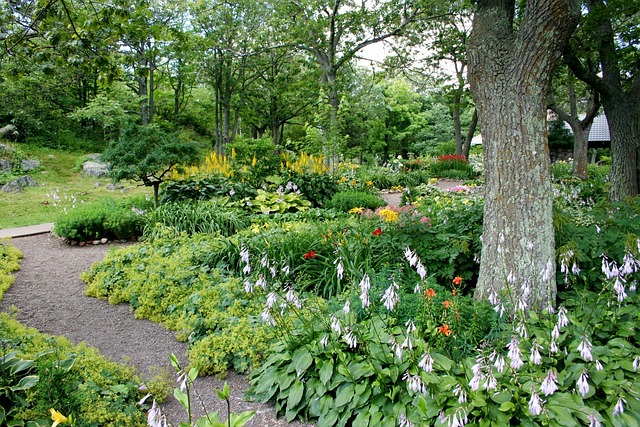Key Takeaways:
- • Implementing sustainable landscaping practices enhances curb appeal and benefits the environment.
- • Regular maintenance, including pruning and mulching, is crucial for maintaining a healthy and attractive yard.
- • Incorporating native plants and efficient irrigation systems can reduce water usage and maintenance costs.
Introduction
Creating an attractive, environmentally friendly landscape is a goal for many homeowners who want to balance curb appeal with responsible stewardship. By focusing on sustainable practices, you not only boost the beauty and value of your property but also make a positive impact on your surroundings. Those seeking professional support can find expert landscaping Southlake, TX to guide them towards eco-friendly solutions tailored to their area.
Sustainable landscaping isn’t just about reducing water usage or chemical inputs; it’s about adopting a holistic approach that encompasses plant health, efficient resource use, and biodiversity enhancement. A thoughtfully managed landscape can provide enjoyment through every season and minimize your carbon footprint.
Managing your yard sustainably brings both visual harmony and practical benefits. Homeowners who focus on periodic tasks such as pruning, mulching, and planting can reduce long-term maintenance while ensuring a more resilient outdoor space.
Whether you’re starting from scratch or improving an existing lawn, you can use regionally adapted strategies to reduce waste, lower costs, and keep your landscape thriving all year long.

Pruning and Trimming
Well-timed pruning and trimming keep your landscape vigorous and visually appealing. Removing dead or overgrown limbs stimulates healthier plant growth and prevents the spread of disease. For shrubs and trees, annual trimming is particularly important for maintaining their structure and controlling their size. Pruning also encourages flower and fruit production, adding seasonal interest to your yard.
Particularly for street trees, proper pruning ensures public safety and compliance with local ordinances, thereby helping to avoid storm damage and pedestrian hazards. Over time, these maintenance routines support the longevity of your greenery and foster a safer, more inviting environment.
Mulching and Edging
Mulching conserves moisture, suppresses weeds, and gradually enriches your soil as it breaks down. Select organic mulches, such as shredded bark, wood chips, or leaf mold, to enhance soil health and promote the growth of beneficial organisms. A mulch layer of about two to three inches around your trees, shrubs, and beds can make a substantial difference in water retention and soil condition.
Edging your beds creates a defined border between lawn and garden, expanding the sense of order and making mowing and trimming easier. This simple investment in time produces a crisp, tidy appearance that amplifies the rest of your landscaping efforts by keeping turf weeds out and soil in place.
Native Plant Selection
Native plants form the foundation of a resilient, resource-smart garden. Because they’re adapted to local climates, these species require less water and fewer chemical interventions, making maintenance simpler and more environmentally friendly. They also provide crucial habitat and food sources for native pollinators, birds, and beneficial insects, strengthening your local ecosystem.
By incorporating native perennials, shrubs, or grasses, you can minimize your environmental impact while enhancing the vibrancy of your landscape. Native plant gardens are better suited to withstand local pests and weather fluctuations, ensuring beauty through every season.
Efficient Irrigation
Modern irrigation technologies make it easier than ever to water efficiently. Drip irrigation delivers moisture directly to plant roots, minimizing evaporation and runoff. Smart controllers can adjust watering schedules based on rainfall, soil moisture, and temperature, ensuring plants get what they need without waste.
Watering deeply but less frequently encourages your plants to develop deeper, more drought-resistant roots. Rain barrels and other catchment systems offer a sustainable way to supplement irrigation during dry spells. Conserving water is important not only for your home, but also for the health of your community and ecosystem—especially during times of drought or water restrictions.
Seasonal Maintenance
Adapting your lawn care throughout the year helps preserve consistent curb appeal. In spring, clear debris and refresh mulches as needed to make space for new growth. Summer calls for attentive watering, regular mowing, and spot-checks for pest activity. As fall arrives, core aeration and overseeding prepare your turf for winter while maintaining healthy root systems. Winter’s main tasks are protection and preparation, such as wrapping vulnerable plants and cleaning equipment for the next growing season.
Keeping a seasonal checklist ensures all tasks are managed promptly, reducing the risk of problems and supporting ongoing landscape resilience.
Sustainable Practices
A sustainable landscape combines smart plant choices, minimal chemical use, and a focus on closed nutrient cycles. Practices like xeriscaping—using drought-tolerant plants and reducing turf areas—dramatically lower water demand, while organic fertilizers and composted yard waste promote rich, living soils that support long-term plant health.
Sustainable design can also increase your property’s value and save time and money. By composting kitchen and garden waste, you recycle nutrients back into your landscape. Reducing lawn size in favor of beds, pathways, and patios minimizes maintenance and maximizes both enjoyment and environmental benefits.
Conclusion
Thoughtful, sustainable lawn care and landscaping practices not only provide year-round curb appeal but also conserve resources and protect local ecosystems. By prioritizing regular maintenance, efficient irrigation, and the integration of native plants, homeowners can ensure that their outdoor spaces remain functional, beautiful, and beneficial for years to come.
